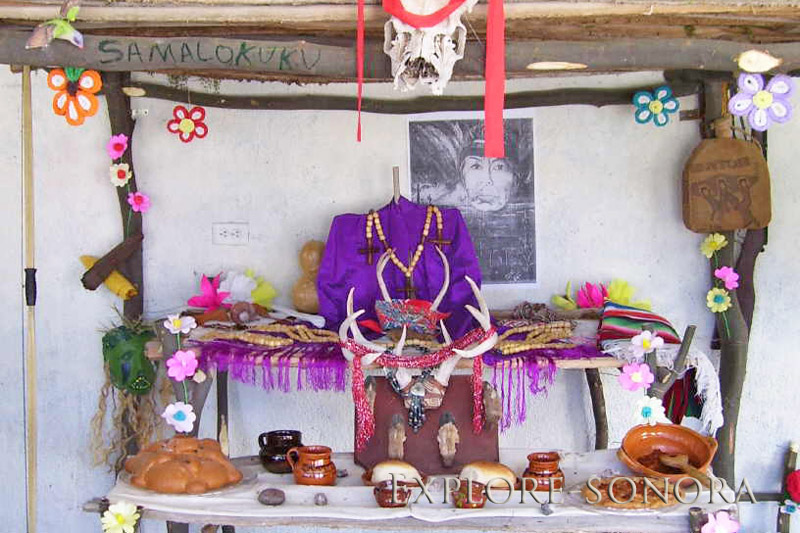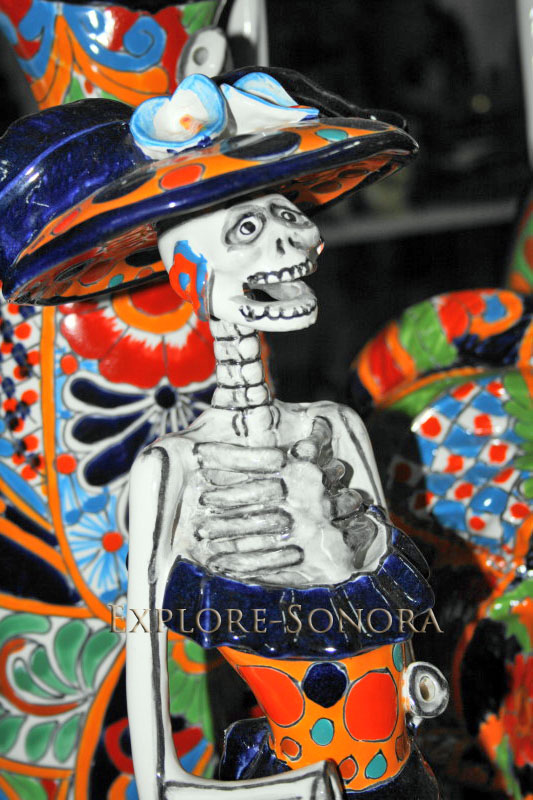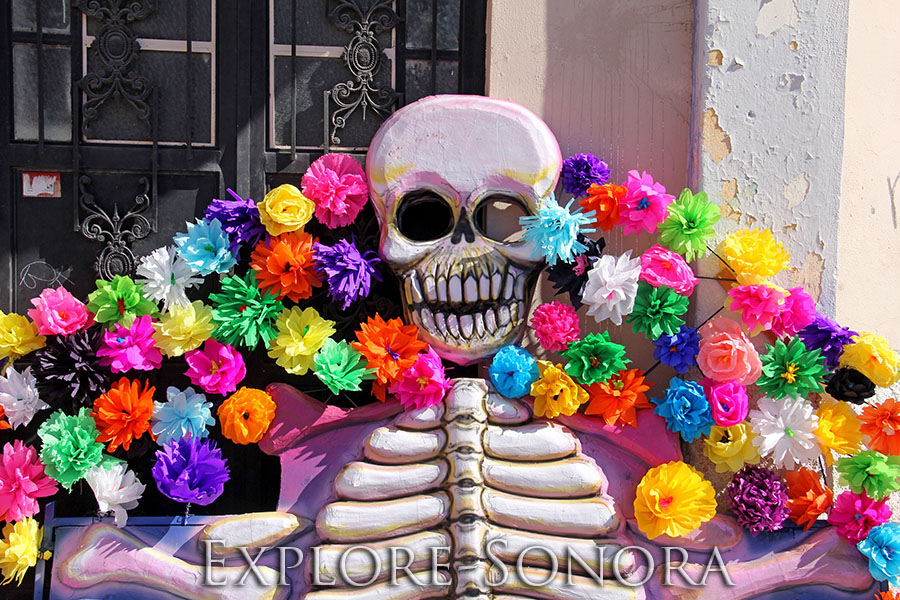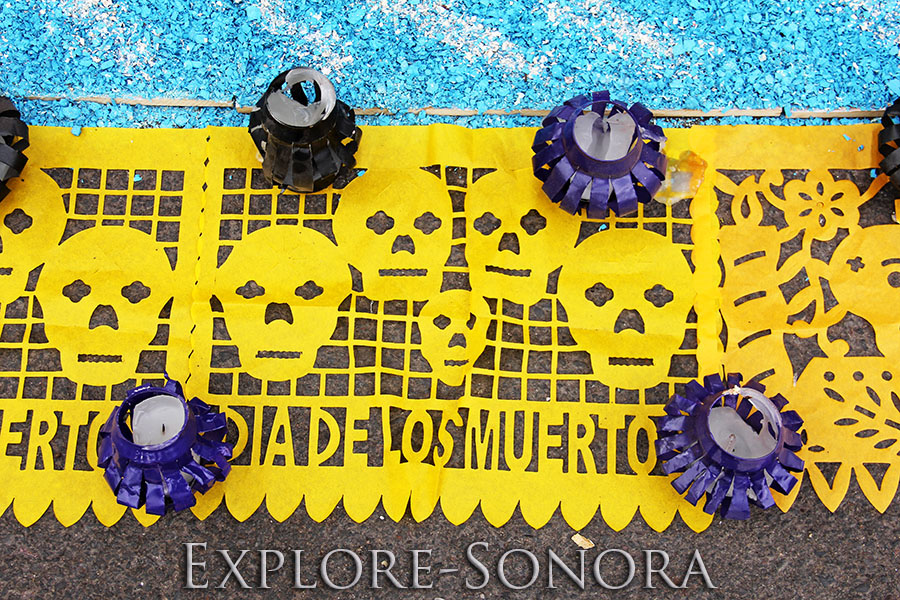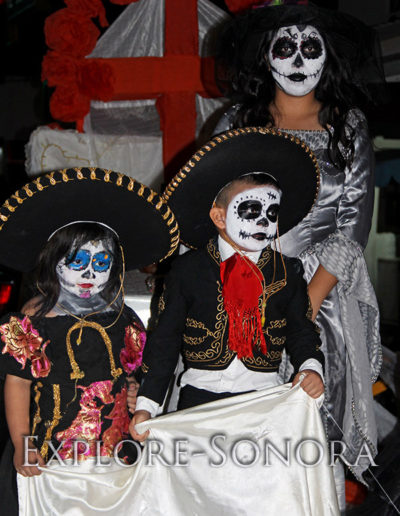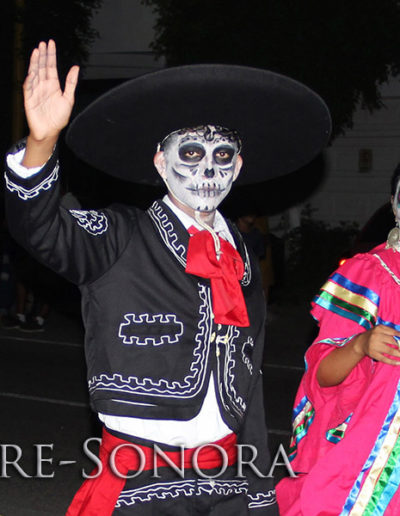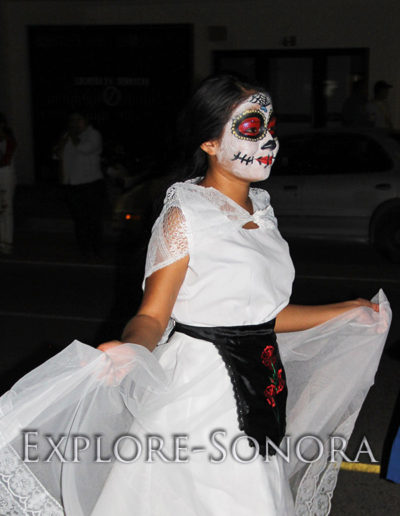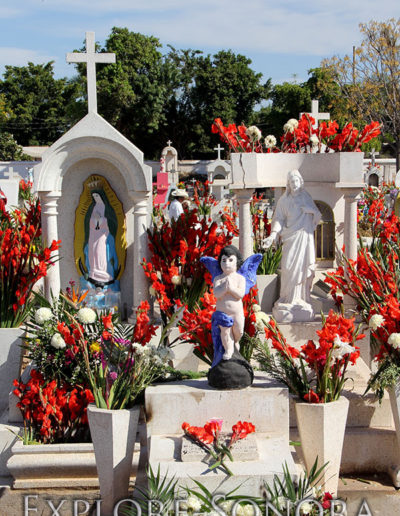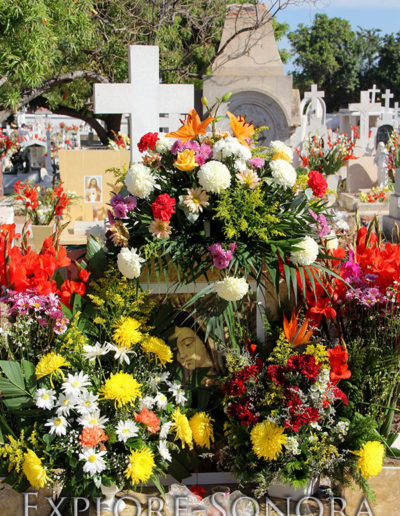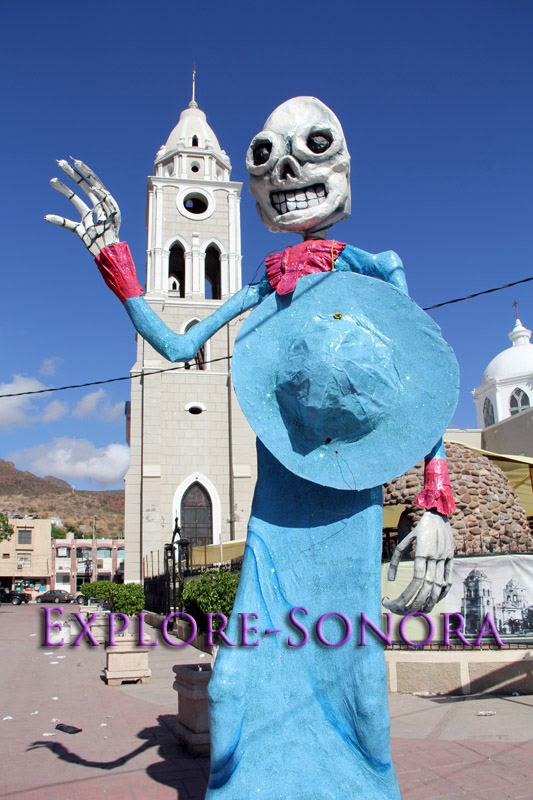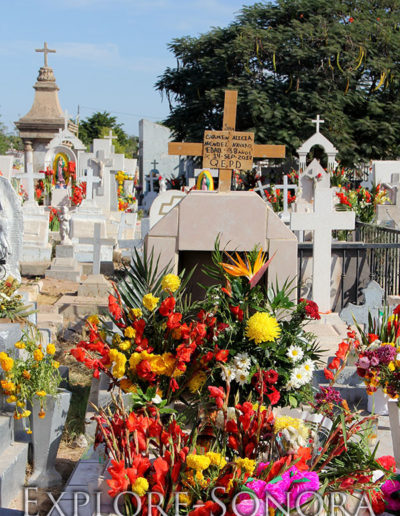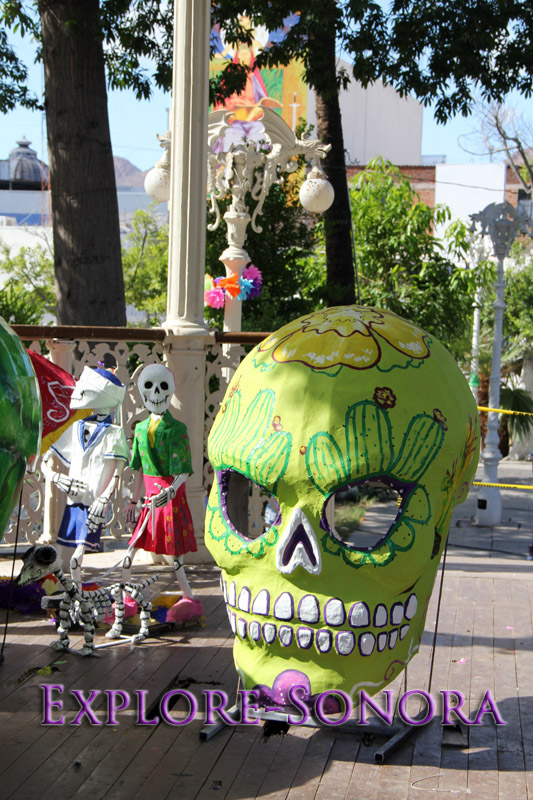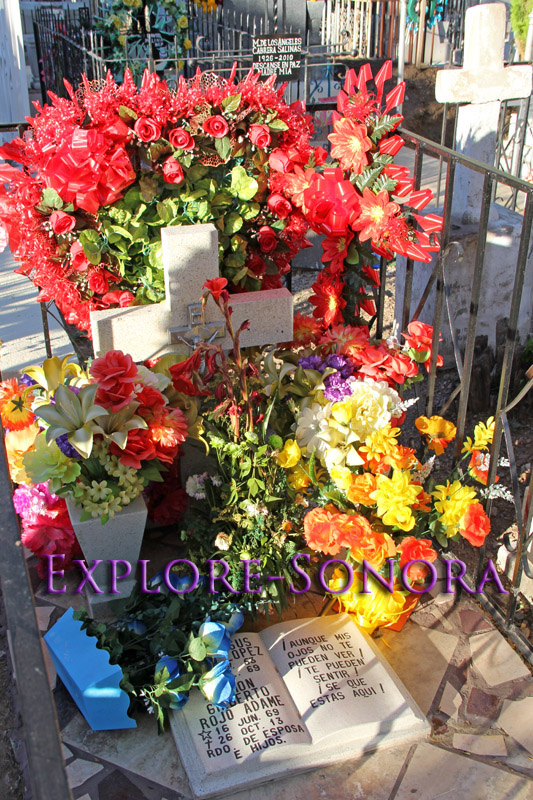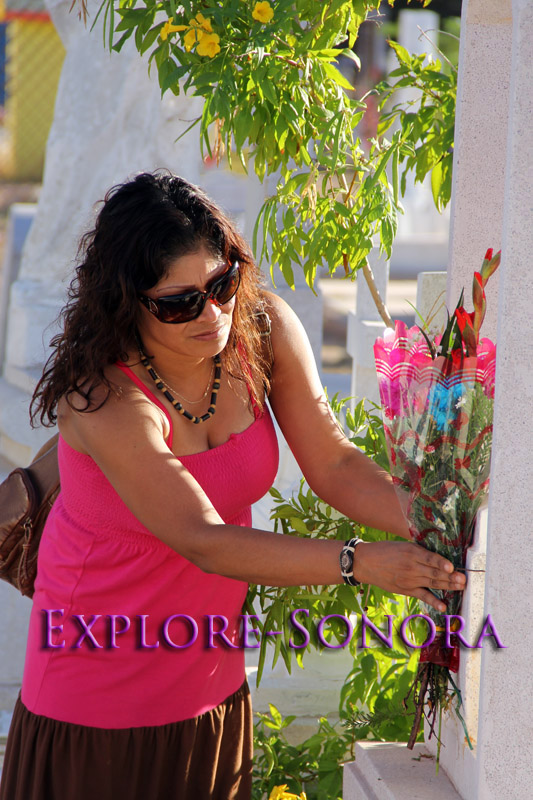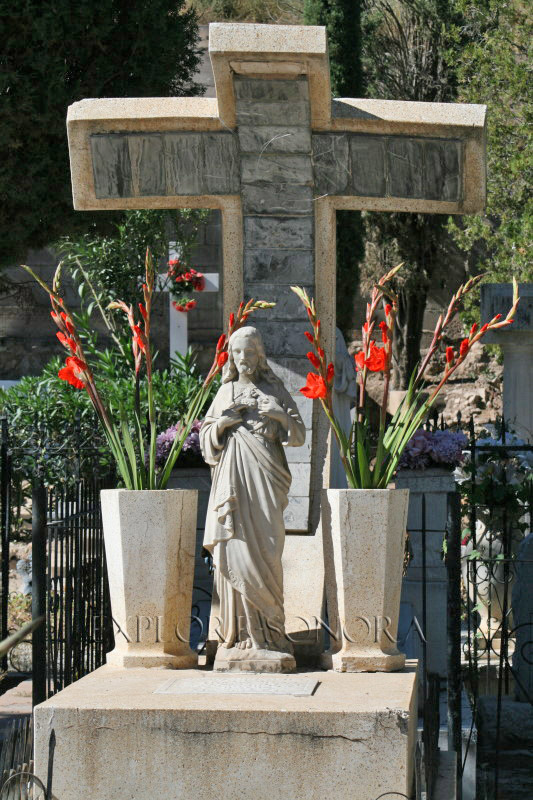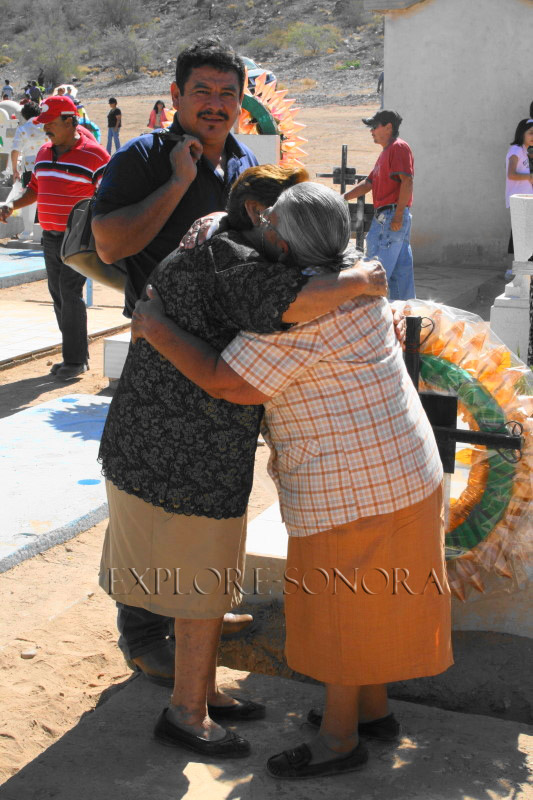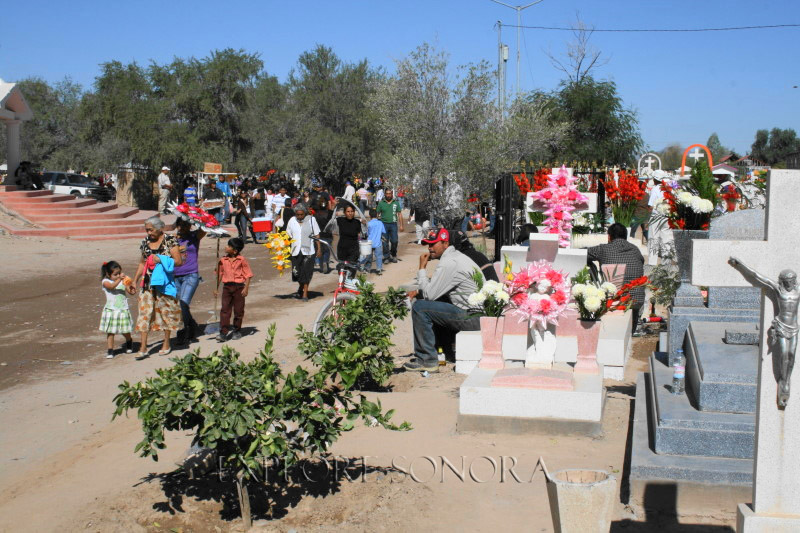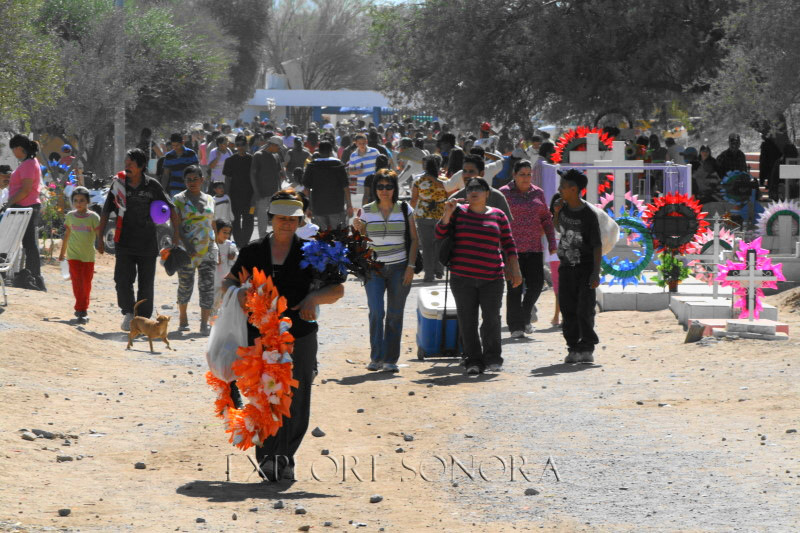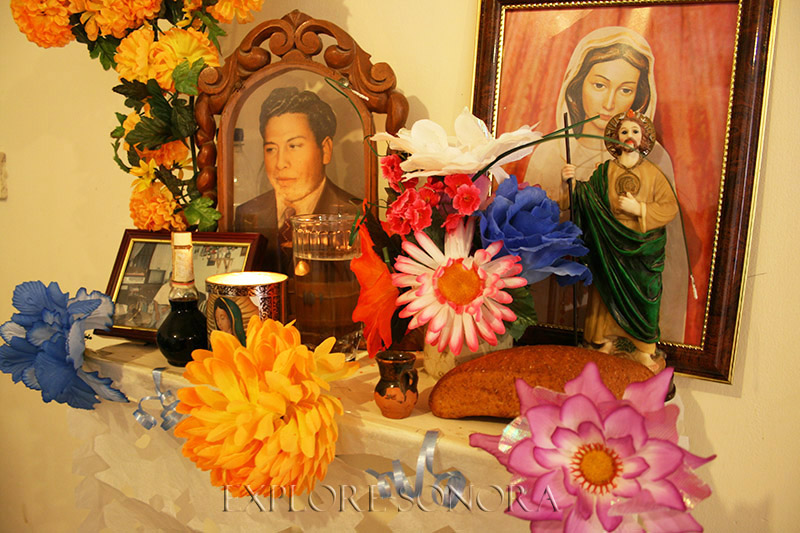Dia de los Muertos – Day of the Dead in Sonora, Mexico
El Día de los Muertos, the Day of the Dead, is a Mexican tradition that interweaves ancient aspects of pre-Hispanic culture with Christian beliefs to create a unique annual event of remembrance for the departed.
As in other areas of Mexico, this important time of commemoration is celebrated throughout Sonora, from local observances at cemeteries to processions and festivals held in Sonoran cities and towns.
There are two main parts of this unique Mexican holiday. Perhaps the best known is the celebratory aspect, the modern-day versions of ancient Aztec traditions honoring the dead. This includes colorful festivals and public displays of altars, skeletal characters and art.
The other side of Day of the Dead is a more somber, personal remembrance of the dead that includes the construction of home altars, or ofrendas; going to the cemetery to clean and paint gravesites, and adorn them with flowers and other decorations; and spending time at the grave of the deceased, perhaps listening to a serenade of that person’s favorite song, or sharing a meal.
Activities on the Día de los Muertos are designed not only to remember deceased loved ones, but to connect with them, and at the same time maintaining a unique piece of the national and regional cultural identity.
During the last week of October, vendors of vibrant, colorful flowers and gravesite decorations will begin to appear on the street and in various other places, especially near local cemeteries. See photos of flowers and adornments.
The Day of the Dead is actually observed on two days, November 1 and 2. It has some similarities with the American Memorial Day, as Mexicans go to the cemetery on both days to tend to the graves of loved ones and reunite with family members.
The first day of November, also known as the Catholic “All Saints Day,” is el Día de los Santos Inocentes, or the day of the innocent saints, a time to remember children and infants who have died.
The second day of November, the Catholic “All Souls Day” is when the Día de los Muertos is officially observed. Family members and loved ones visit the cemetery to sweep, clean and paint gravesites, and will then decorate them with colorfully decorated rings of ribbons and flowers (known as ramas, or coronas).
In addition, many families share a meal at the gravesite with the departed, as musicians and “taka-taka” bands wander the grounds of the cemetery offering to play a favorite song for the departed. See cemetery photos.
Another common Day of the Dead activity is to build an altar to remember and honor a deceased loved one, or adorn a home altar for the annual visit of the deceased. See photos of altars.
And in addition to reverent mourning of loved ones, the Day of the Dead also has a festive side, exhibited in brightly colored decorations and in beautiful, creative art that features skeletal Catrina figures and other festive and often humorous images of the dead. See examples of Día de los Muertos art.
Sonoran Day of the Dead Altars
Day of the Dead Altar Elements
Sonoran Day of the Dead Adornments
Sonoran Day of the Dead Cemetery Photos
Sonoran Day of the Dead Art
Day of the Dead Spanish Vocabulary

